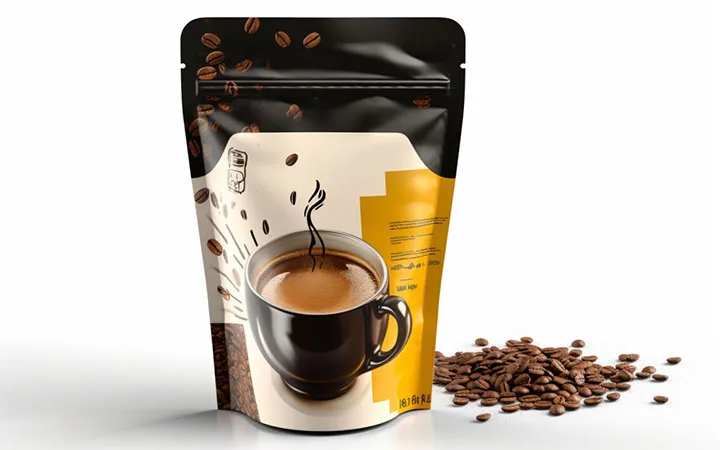In today’s competitive marketplace, packaging isn’t just about protecting a product; it’s a critical marketing tool, a brand ambassador, and a key differentiator. Among the myriad packaging options available, stand up pouches have emerged as a game-changer, offering an unparalleled blend of functionality, aesthetics, and sustainability. For businesses looking to elevate their product presentation and appeal to eco-conscious consumers, understanding the full potential of these versatile pouches is essential.
Why Stand Up Pouches Are Dominating the Packaging Landscape
The rise of stand up pouches isn’t coincidental. Their inherent design offers significant advantages over traditional packaging formats. Unlike rigid containers or flat bags, stand up pouches are designed to stand upright on shelves, maximizing visibility and brand presence. This upright stance immediately catches the eye, allowing for larger branding areas and more compelling graphics.
Beyond aesthetics, their practical benefits are numerous. They are lightweight, reducing shipping costs and carbon footprint. Their flexible nature means they can be easily stored before filling, optimizing warehouse space. For consumers, the convenience of resealable zippers, spouts, and easy-open tear notches makes them incredibly user-friendly, contributing to a better overall product experience.
The Versatility of Stand Up Pouch Materials
One of the greatest strengths of stand-up pouches lies in the diversity of materials they can be constructed from. This allows for tailored solutions that meet specific product requirements, from food safety to extended shelf life.
Common Material Layers:
Outer Layer: – Often made from PET (Polyethylene Terephthalate) or BOPP (Biaxially Oriented Polypropylene), this layer provides excellent printability, gloss, and scuff resistance, ensuring your brand message remains vibrant and intact.
Barrier Layer: – This is crucial for products requiring protection from moisture, oxygen, UV light, or odors. Materials like aluminum foil, metallized PET, or EVOH (Ethylene Vinyl Alcohol) are commonly used to extend shelf life and maintain product freshness. For instance, a study by the Flexible Packaging Association highlighted that flexible packaging, including stand up pouches, can reduce food waste by extending shelf life, contributing to significant environmental benefits.
Inner Sealant Layer: – Typically made from PE (Polyethylene) or CPP (Cast Polypropylene), this layer facilitates strong heat seals, preventing leaks and ensuring product integrity.
The combination of these layers creates a robust, multi-functional barrier that can preserve everything from gourmet coffee and organic snacks to pet food and industrial liquids.
Customization: Making Your Brand Stand Out
In a crowded market, differentiation is key. Stand up pouches offer extensive customization options that enable brands to create truly unique and memorable packaging.
Design Elements to Consider:
Print Quality: – High-definition graphics, vibrant colors, and intricate designs can be achieved through rotogravure or digital printing, making your product pop on the shelf.
Finishes: – Matte, gloss, or soft-touch finishes can add a tactile dimension, enhancing the perceived value and premium feel of your product.
Shape and Size: – While the name suggests a standard form, stand up pouches can be custom-shaped to reflect brand identity or product attributes. They come in a vast range of sizes, from single-serving portions to bulk family packs.
Closures: – Resealable zippers (press-to-close or slider), spouts for liquids, and tear notches for easy opening all contribute to consumer convenience and product preservation.
Windows: – Transparent windows allow consumers to see the product inside, building trust and showcasing quality, particularly effective for snacks, nuts, or pet treats.
Handle Features: – For larger pouches, built-in handles improve portability and ease of use.
A well-designed stand up pouch can significantly influence purchasing decisions. According to NielsenIQ, 66% of consumers agree that packaging design influences their buying decision, underscoring the importance of investing in compelling pouch design.
Sustainability: A Core Advantage
As environmental concerns grow, sustainable packaging solutions are no longer a niche request but a market imperative. Stand up pouches offer several advantages in this regard:
Reduced Material Usage: – They typically use less material than rigid packaging for the same volume, leading to fewer raw materials consumed and less waste generated.
Lower Transportation Emissions: – Their lightweight and flexible nature means more pouches can be transported per shipment, reducing fuel consumption and carbon emissions.
Recyclability & Compostability: – Advances in material science are leading to more readily recyclable and even compostable stand-up pouches, aligning with circular economy principles. Brands committed to sustainability are increasingly adopting these eco-friendly options.
Extended Shelf Life: – By providing superior barrier protection, these pouches help reduce food waste, a significant contributor to environmental impact.
Businesses that embrace sustainable packaging options like stand up pouches not only contribute to a healthier planet but also enhance their brand image and appeal to a growing segment of environmentally conscious consumers.
Actionable Tips for Choosing the Right Stand Up Pouch
1. Define Your Product Needs:- What are the key characteristics of your product? Does it require oxygen barriers, moisture protection, or UV light shielding?
2. Consider Your Target Audience:- What features are important to them? Convenience (resealable zippers), aesthetics (premium finish), or sustainability (recyclable materials)?
3. Optimize for Shelf Appeal:- Work with designers to create eye-catching graphics and branding that will stand out in a retail environment. Remember the power of a strong visual message.
4. Evaluate Material Options:- Explore the various film combinations to find the perfect balance of protection, durability, and cost-effectiveness for your specific product.
5. Prioritize Sustainability:- Investigate options for recyclable, compostable, or post-consumer recycled (PCR) content pouches to align with consumer values and regulatory trends.
6. Partner with an Experienced Supplier:- Choose a packaging partner with a track record of producing high-quality stand up pouches and offering expert guidance on material selection and design.
Conclusion: The Future is Flexible
The evolution of packaging is a continuous journey, and stand up pouches represent a significant leap forward. Their blend of aesthetic appeal, functional versatility, and growing sustainability credentials makes them an indispensable choice for brands aiming to succeed in today’s dynamic market. By carefully considering material science, design innovation, and consumer preferences, businesses can leverage the power of stand up pouches to enhance brand visibility, improve product protection, and champion environmental responsibility. Embracing this modern packaging solution is not just a trend; it’s a strategic move towards a more efficient, attractive, and sustainable future for your products.

